29/05/2024
how to use a Car Jack and Car Stand
The sound that clearly lets you know that you have a flat tire is the regular thumping or flapping noise. It is commonly heard while driving. This sound indicates that the vehicle is due for a tire change soon. To do that, you need to use a car jack. For some, a car jack could be quite tricky to use.
Reading this article would help a lot, especially for many people who feel anxious to use a car jack. It is quite simple to get your vehicle into the air safely without hurting yourself. You will not even damage your car if you just follow the simple steps in the article. These steps will assist you no matter if you are a professional doing your own car upkeep.
Car jack use is a very important topic that every car owner should pay attention to. If he is using the car jack for the first time, he should know how to proceed. Hiring the services of a reputable and professional moving company is always advised. They will provide you with their expertise to assist in the process. But if you must do it alone, below are the instructions. These points help you through the process of how to use a car jack safely.
Step 1- Find a Safe Place to Pull Over

The first course of action to take is to find a safe area. Here, you can pull up when you realize you have a flat tire. The best position is completely off the road. The ideal place is to park in a parking lot or on flat ground. If you are on a highway and see an exit, take it. If this is not feasible, pick a route with little traffic and pull as far to the side as you can.
Ensure that the surface is firm and level to keep the jack from sinking or tilting. If you do not ensure this, it might cause the automobile to fall. Note that driving long distances with a flat tire can do severe damage. They can damage both the tire and the car.
Step 2- Secure Your Vehicle
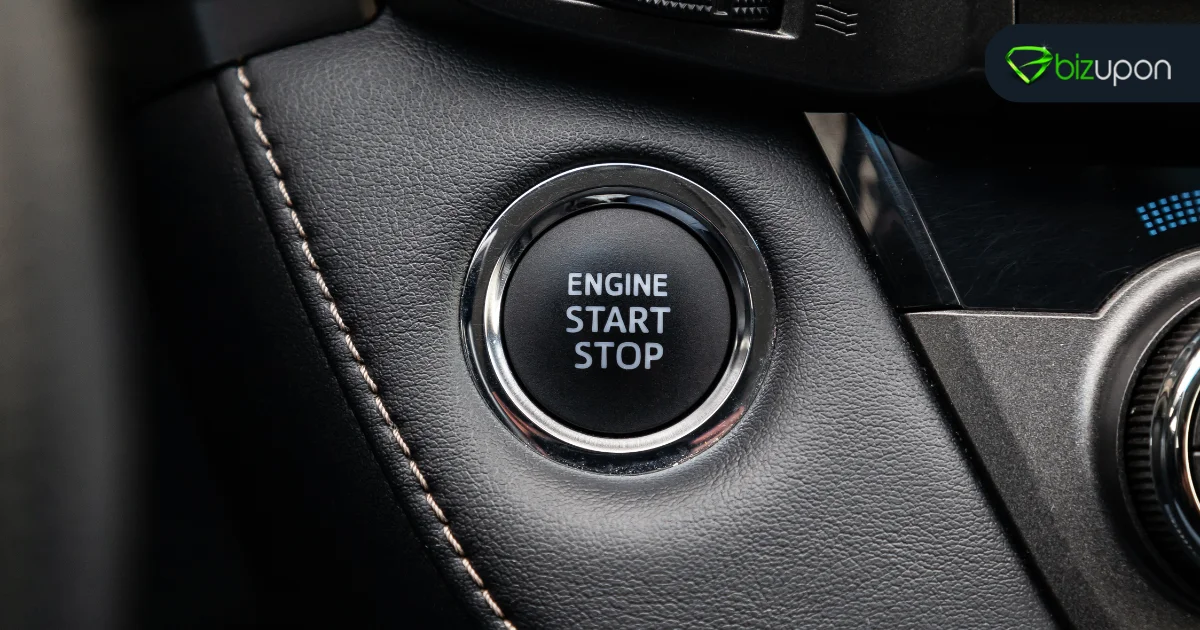
Make sure your car is safe and set down before you start jacking it up. Turn off the engine and shift the car into parking mode. You can also shift it to gear if you have a manual gearbox and apply the parking brake.
Place a hefty item, such as a brick or piece of wood, directly opposite the tire you are jacking up. You can also use a huge boulder to do the same. This precaution helps prevent the automobile from rolling off the jack. If you have passengers, urge them to get out of the car. This will help to decrease weight and prevent excessive movement. This is the main step of how to use a car jack securely.
Step 3- Locate the Jack and Jacking Points
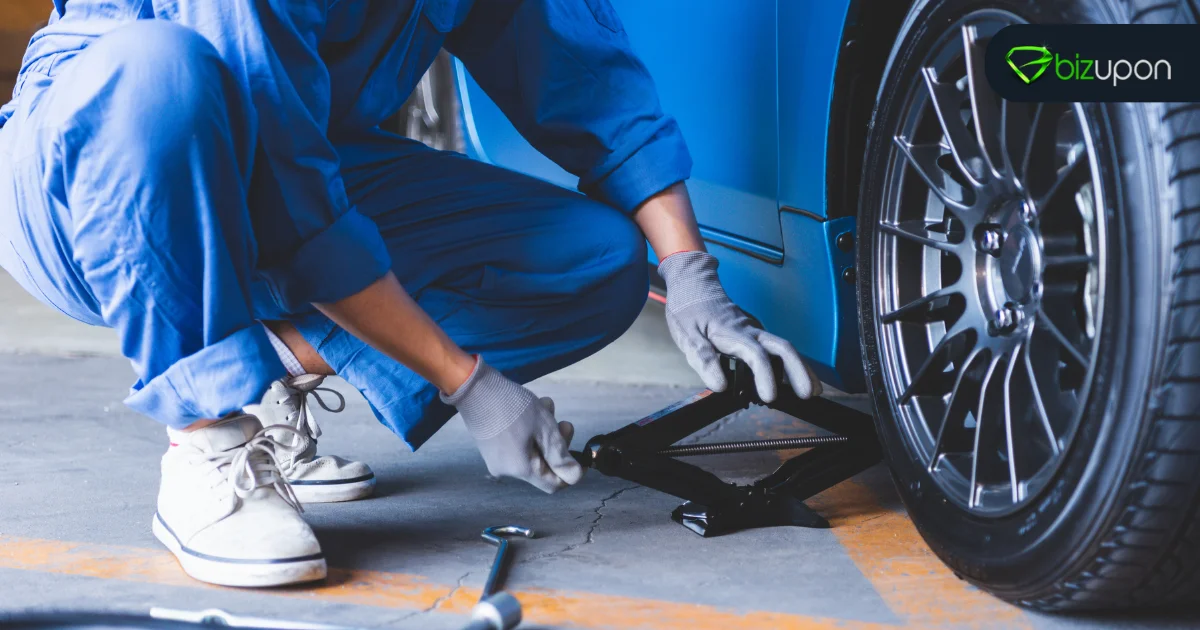
Most cars have a jack in the trunk. In the case of SUVs, the jack will be under the cargo floor cover. Try to look up the precise jacking points on your vehicle by consulting the owner's manual. These are often strengthened metal ribs located beneath the car's rocker panels. They are directly behind the front wheels and forward of the rear wheels.
Using the proper jacking points matters a lot. These locations are intended to support the vehicle's weight without causing harm. Therefore, you must pay precise attention to the jacking points in your car.
Step 4- Position the Jack
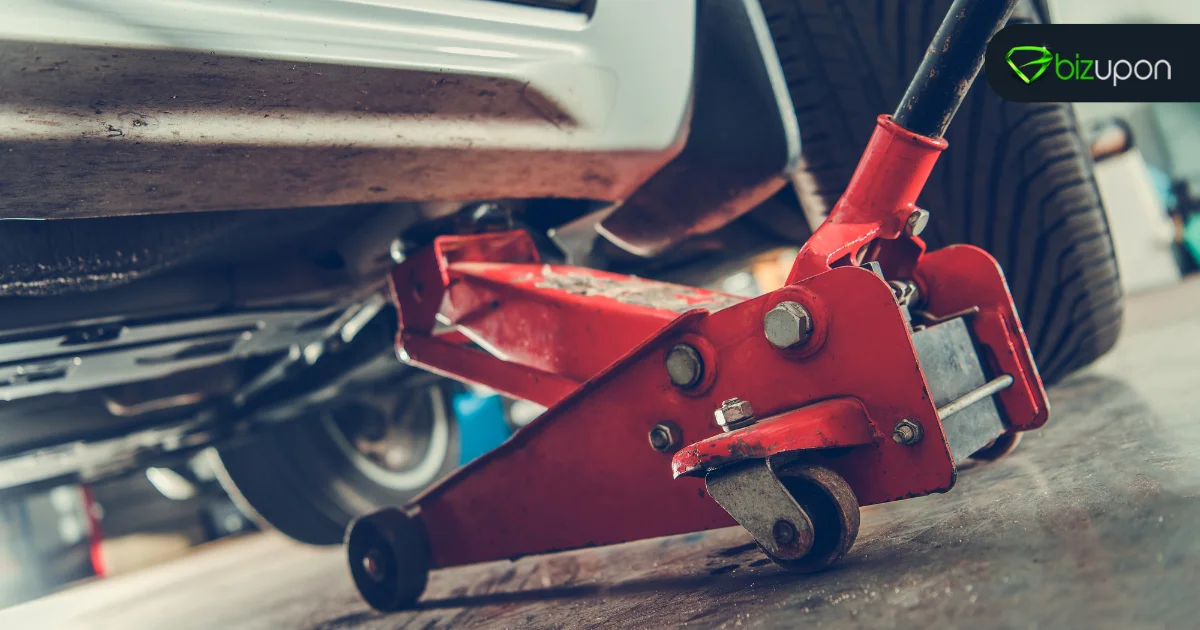
Once you have discovered the proper jacking spots, place the jack as needed. Most jacks feature a slot on top that fits into the strengthened rib at the jacking point. If your car's arrangement is different, see your owner's guide for the right jack positioning.
Before you start lifting, ensure the jack is entirely low to fit under the automobile. Positioning the jack appropriately ensures that it firmly engages the jacking point. This will result in a solid lift.
Step 5- Jack Up the Car
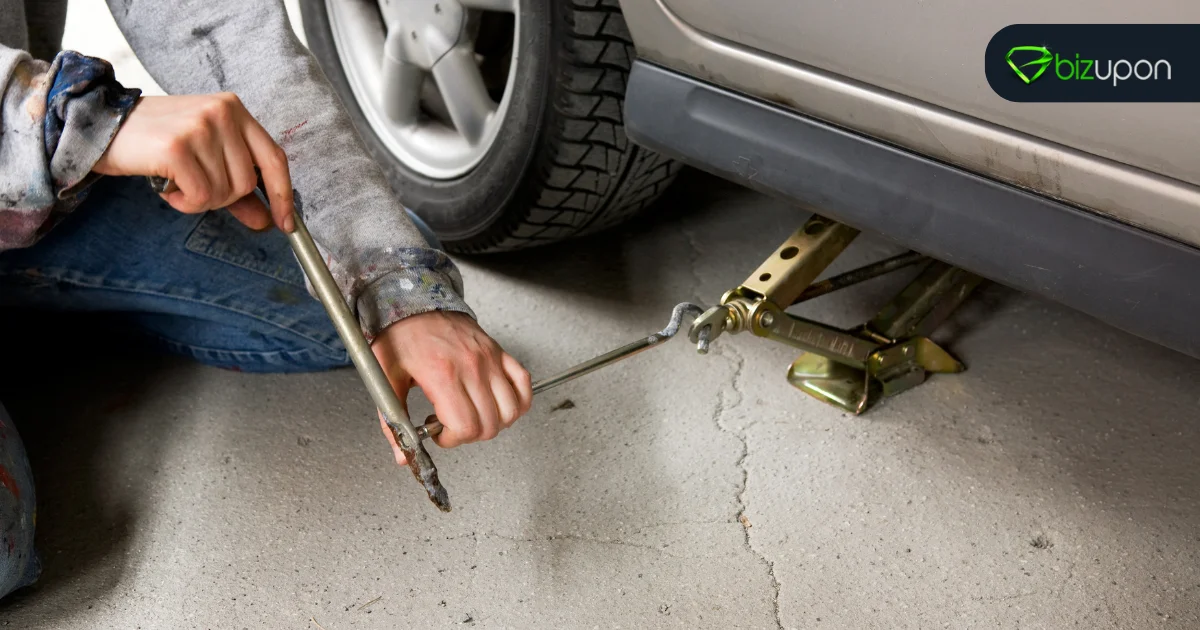
The jack handle should be turned clockwise to raise the automobile. Do this steadily, keeping the jack upright as it climbs. A slanted jack is unstable and dangerous. Lift the automobile until the flat tire is off the ground. This will give you plenty of space to remove and replace it.
If you are working under the vehicle for maintenance or repair, position a jack stand beneath. It should be placed beneath the rocker panel near the jack for added safety. Jack stands are necessary because they prevent the automobile from falling if the jack fails. Jack stands the main point when you think of how to use a car jack.
Step 6- Lower the Car
Turn the jack handle slightly anticlockwise when you are ready to bring down the vehicle. Lower the automobile until the tire is solidly on the ground.
Once the automobile is safely on the ground, remove the jack. You can then return it to its storage position. Do not forget to remove any things that were blocking the tires. This step is critical to prevent any confusion or problems when you resume driving.
Step 7- Use a Set of Ramps (Optional)
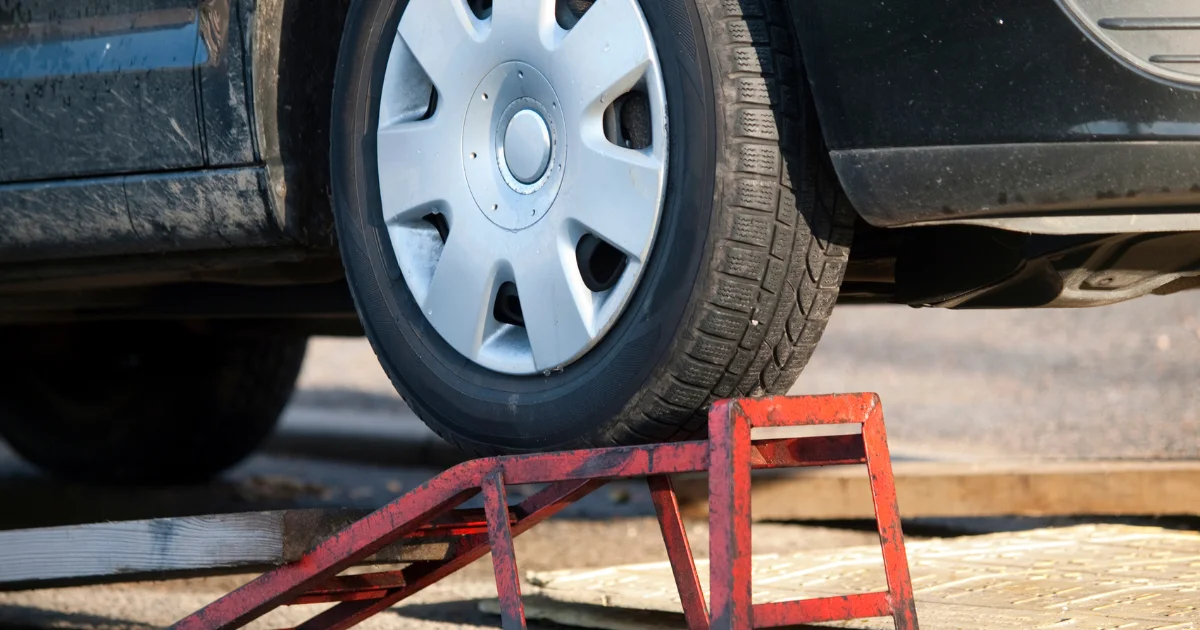
Car ramps are an alternative to jacking up an automobile. These are especially for jobs that involve elevating one end of the vehicle rather than replacing a tire. Ramps are often considered safer and simpler to use.
Simply drive the automobile onto the ramps and lift the selected end. They give a sturdy base without the need for wheel wedges. However, ramps are more costly than jacks. They are also not suitable for tire replacements. Knowing how to utilize ramps can help you increase your DIY car upkeep options.
Mistakes to Avoid
Safety is critical when using a car jack. The following crucial errors must be avoided to guarantee a safe and effective procedure:
Never climb underneath a car held up by a car jack
Never climb underneath a car that is solely supported by a jack. You must not do this even if it looks to be stable. Car jacks are temporary lifts and not permanent supports. They might fall suddenly because of mechanical faults. It can also fall because of incorrect installation or weight movements.
This rapid fall might force the vehicle to topple, resulting in serious damage or death. Always use jack stands with the jack to help reduce this danger. Jack stands are particularly built to safely retain the vehicle's weight for lengthy durations. They create a stable and safe setting.
Make sure the car is on solid ground
The ground on which you jack up your car is critical to preserve stability. Soft or uneven ground, such as soil or grass, might cause the jack to sink. Such a situation will reduce its capacity to firmly support the automobile. This instability may cause the automobile to tumble, resulting in injury or vehicle damage.
Always strive to do jack operations on firm, level ground, such as concrete or asphalt. If you must jack up the automobile on a less stable surface, place a board. You should use a strong board beneath the jack to disperse the weight and improve stability. This prevents the jack from sinking into the earth and ensures a safe lift.
Never jack up a car on the side of the road
Jacking up an automobile on the side of a main road is dangerous. This is due to the closeness of moving cars. Such a situation will put you at risk of being hit by passing cars. It will also add stress and urgency to the procedure. The condition increases the possibility of mistakes.
You might run a flat tire or need some ordinary repair work. Then, it is wise to pull your car to a safe zone. You can think of a parking lot or a quiet side street. If relocating the automobile is not an option, pull as far off the road as possible. You can use flashlights and reflective triangles to notify oncoming cars. However, the safest method is to avoid roadside jacking entirely whenever feasible.
Benefits of Using a Jack with Jack Stand for Flat Tire Troubles
Using a jack and a jack stand together provides ideal security and support. The jack elevates the automobile, while the jack stand offers sturdy support to keep it from dropping suddenly. This combination enables you to confidently change a flat tire. It lowers the danger of injury and offers a safe repair environment.
The Last Statement on Using Car Jack
Using a car jack properly requires careful planning and attention to specific rules to protect your vehicle's safety. Follow these instructions to replace a tire or do other maintenance activities with confidence.
Avoiding frequent blunders, such as working beneath an unsecured car or jacking up on soft surfaces, improves overall safety. You can handle how to use a car jack swiftly with these techniques. Make sure to go through these points whether you are a skilled technician or a beginner.